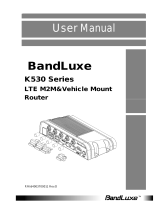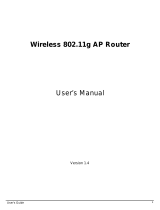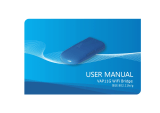
Table of Contents
1
Table of Contents
Table of Contents .....................................................................1
Package Contents....................................................................3
Package Contents.................................................................................3
Features................................................................................................3
Hardware Overview...............................................................................4
Installation ................................................................................6
Wizard Setup.............................................................................9
Internet Setup.........................................................................11
Basic Setting.......................................................................................11
DDNS..................................................................................................15
Optional...............................................................................................16
Router Setup...........................................................................18
Network Setting...................................................................................18
Advanced Routing...............................................................................20
WiFi Setup...............................................................................22
Basic WiFi Network.............................................................................22
WiFi Security.......................................................................................23
Advanced WiFi Setting........................................................................27
WiFi Clients Filter................................................................................29
3.5G HSPA Setup....................................................................30
PIN Verification....................................................................................30
PIN Management................................................................................30
Preferred Network...............................................................................31
Security Setup........................................................................32
Firewall................................................................................................32
Internet Access Policy.........................................................................35
Single Port Forward ............................................................................37
Port Range Forward............................................................................38
Port Range Trigger..............................................................................39
QoS.....................................................................................................40



























